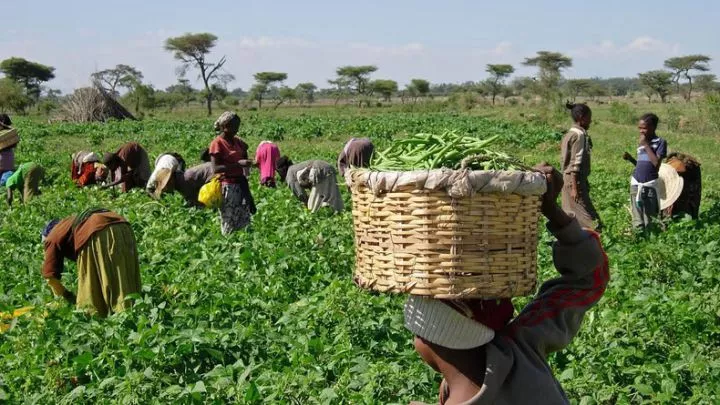Agriculture is still the main source of income for many African countries, providing jobs for a large part of the population.
Most people in Africa rely on farming, raising animals, and fishing to make a living. Even though other industries are growing, agriculture remains the biggest employer, especially in rural areas. Globally, it is the second-largest employment sector after services.
According to the Food and Agriculture Organization (FAO) 2024 Statistical Yearbook, the number of people working in agriculture, including forestry and fishing, has dropped by 13% from 2000 to 2022. In 2022, about 892 million people worked in agriculture worldwide, 133 million fewer than in 2000.
Despite this decline, agriculture remains vital for Africa’s economy and the livelihoods of millions.
The FAO report
The report highlights that from 2000 to 2019, the number of people working in agriculture fell to 863 million due to economic changes. This decline worsened with the impact of the COVID-19 pandemic.
However, between 2019 and 2020, this trend reversed as many people, especially in Africa and Asia, moved back to rural areas and returned to farming. This shift led to an increase of 5 million agricultural workers.

The report also reveals that in Africa, nearly two-thirds of the population worked in agrifood systems during this time. This highlights how important the agricultural sector is for people’s livelihoods across the continent.
Africa’s booming agricultural industry
Many African economies depend heavily on agriculture for growth, jobs, and exports.
Countries like Ethiopia, Nigeria, and Kenya rely on farming for a large share of their GDP and employment. In Ghana, Tanzania, and Côte d’Ivoire, cash crops like cocoa, coffee, and tea are major sources of foreign income. Meanwhile, in Malawi, Sudan, and Uganda, most people work in agriculture, producing key exports such as tobacco, maize, and livestock.
Even with efforts to diversify economies, agriculture remains a key driver of development across Africa.
According to the FAO Statistical Yearbook 2024, the table below lists the top 10 African countries with the highest number of people working in agriculture.
[th]Rank[/th] [th]Country[/th] [th]Number Employed (Million)[/th] [th]Population (Million)[/th]
| 1 | Ethiopia | 36.2 | 132.5 |
| 2 | Nigeria | 26.8 | 232 |
| 3 | Tanzania | 19.2 | 66.6 |
| 4 | DR Congo | 18.6 | 109,2 |
| 5 | Uganda | 11.7 | 50.0 |
| 6 | Madagascar | 10.5 | 31.9 |
| 7 | Mozambique | 9.9 | 34.6 |
| 8 | Kenya | 7.6 | 55.3 |
| 9 | Egypt | 5.7 | 116.5 |
| 10 | Ghana | 5.5 | 34.4 |
Ethiopia, with a population of 132 million, has 36.2 million people employed, giving it an employment ratio of 28.5%.
Tanzania follows closely with a 28% employment ratio, as 19.2 million out of its 66 million people are working. Uganda has 11.7 million workers out of 50 million, resulting in an employment ratio of 23.9%.
Despite their large populations, DR Congo (109.2 million) and Nigeria (232 million) have lower employment ratios at 17% and 12%, with 18.6 million and 26.8 million employed, respectively.
These numbers show major differences in employment opportunities. Ethiopia and Tanzania have stronger workforce participation, while Nigeria and DR Congo struggle due to large informal sectors and economic instability, which limit job creation.
Uganda, though performing better than Nigeria and DR Congo, still faces youth unemployment challenges, affecting overall workforce participation.

